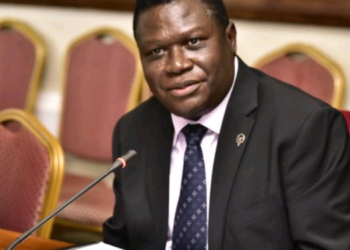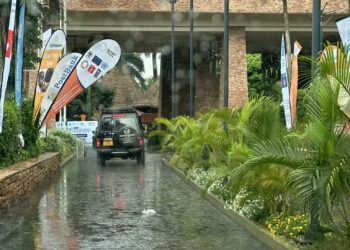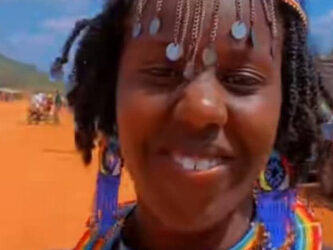Uganda Wildlife Conservation Education Centre (UWEC) popularly known as Entebbe Zoo, was opened in 1952 by the colonial government, as a reception centre for sick, injured, orphaned, or rescued animals.
In the early 1960s, it changed its role to a traditional zoo (”Entebbe Zoo”), a name that rings memories in the minds of many Ugandans to date. At that time, a number of non-indigenous species, including bears and tigers, were kept as attractions.
In May 1994, the UWEC Trust was founded to take over the zoo, primarily for Conservation Education purposes.
Today, UWEC undertakes several conservation initiatives in Uganda, including wildlife rescue and rehabilitation; fully fledged veterinary hospital services; and captive breeding of endangered species of the area. Going beyond these hands-on roles, UWEC furthermore contributes to scientific research and is committed to develop education programmes for the general public, with particular emphasis on instilling a conversation ethic and engaging young people.
Watchdog’s Najib Mulema caught up with UWEC Executive Director Mr. James Musinguzi, who discussed the Centre’s current status, embracing ICT in conservation, future prospects among others;
Qn: What’s new at UWEC?
UWEC or the Uganda Wildlife Conservation Education Centre is the best wildlife conservation centre in East, Central and West Africa. It’s among the top notches at the Pan African Association of Zoos and Aquaria (PAAZA) and this is because of our best landmarks at the centre; so we always endeavor to take centre stage in wildlife conservation. We have come up with innovations aiming at improving our products and services. This has increased repeat visits as well as increased customer satisfaction.
We have also invested more in risk assessment through improving the safety assurance of our visitors. They usually come here and leave without any jeopardy. What I can say is UWEC is on the move and its moving on the right direction.
Qn: UWEC sits on various boards and you were recently elected to the PAAZA. What does it mean to UWEC and Uganda in general?
It was a very good milestone and privilege for UWEC and particularly myself to be elected president of African Zoos and Aquaria by the association. That means UWEC, through me, leads all the zoos in Africa. We are portrayed as a model. Several zoos throughout the world come here to check out how we do our things and due to our excellent status; many people contact us, asking to work with us. But that’s not all; our top position in Africa has highly helped to uplift the image of Uganda.
Also as a result of this exposure, we have started to receive funding both locally and internationally to sustain our projects. So since we are looked at as model, it’s upon us to work hard to maintain our stand.
The elevation of UWEC as a leader of all zoos in Africa is an opportunity that has come at the right time. This is because its exposing the institution, its exposing Uganda and as our tourism industry grows, this is the time to show what we do and how we do it. It is also an opportunity for us to innovate more tourism and conservation products. This will enable us to provide a wide array of these products and services in order for us to be able to compete globally. Now that we are regarded as a model, it’s incumbent on us to remain up there.
It’s a challenge on one part but also good for us because government listens to us more and its willing to support us more so that we can remain on top as the leaders of African zoos and Aquaria.
Qn. How are you responding to the problem of elephants being orphaned mainly due to poaching?
There are increasing human-wildlife conflicts in the country. Poaching has led to abandonment or leaving some animals, especially elephants orphaned. So far we have three baby elephants which have been brought at one week or two weeks old. We have worked so hard to ensure that we raise them.
Charles now is six years old; it was two weeks old when it was brought here. It’s a great effort raising them. For example, Nakato came from Amukungu village in Queen Elizabeth National Park at two weeks.
It takes one tin per day of SMA broad milk formula. Each tin costs Shs115,000, meaning that in a month we need about Shs3.5 million for one baby elephant. However, we cannot run away from them; it’s our duty to look after them and ensure that they survive from one level up to the next one.
The plan is that we are going to engage all stakeholders in the conservation industry to ensure that when the elephants come here, they are rehabilitated and therefore get released into a nursery near a national park. In this case we are looking at Queen Elizabeth National Park because they have been got from there so that we release them in that nursery; we grow them and when they form a family in a size of a herd they are released back into the mainstream national park. Elephants live in herds and once they find themselves in a big group they are able to protect themselves.
So the ultimate plan is to create a nursery where the animals or the elephants that are here are released back to that nursery where they acclimatize with the area and after that they are released back to the wild.
Otherwise it’s not sustainable to have all the elephants here and keep them especially when they grow up. We ultimately want to release them back into the wild of which it must be done systematically and scientifically through formation of a herd.
Qn: This year’s tourism theme talked about digital transformation. How is UWEC planning to use the digital world to manage conservation?
Yes, this year’s tourism theme was “Tourism and the Digital Transformation.” In this digital era, it’s very important to adopt the digital systems for us to be able to manage conservation and conservation education for sustainable development. For example, we have adopted the zoological management information system where we have all our animals on a database which is shared worldwide.
A zoo, say in California is able to notice that we have particular animals here and once we have excess animals, we dispose off some using the disposable plan in our database. That zoo in California may request for that animal in exchange for another animal we don’t have here.
So through the digital era, we can be able to exchange animals online but also monitor the animals’ health, welfare, and ages using our digital platform.
The digital platform has also helped us develop an animal collection plan. Here we are able to upload the number of animals we have;- their species online so that somebody who is far away can know what we have. We have categorized the animals with their uses for example; they may be for conservation, research or recreation.
Also recently we had a workshop here which was code named Zoohackathon and this was aimed at sitting together with wildlife experts, programmers, coders, IT specialists in order to design technology based innovations and solutions towards wildlife trafficking. We have a very big problem of wildlife trafficking in the world today which yields about USD23-25 billion worldwide.
Uganda has not been spared either and the challenge is the wildlife traffickers have become sophisticated in terms of using technology. They also have a lot of money. Therefore, we have come together with the American Embassy, National Information and Technology Authority (NITA), ICT Ministry and Universities to develop codes and technological advancements and ideas that would combat the problem of wildlife trafficking.
After the meeting, we were able to come up with technology innovations that will be able to solve the problem. Some of the solutions we came up with include tracking the animals from their point of origin to where they are going and also developing an online platform where animals can be monitored from one place to another as well as creating awareness about wildlife trafficking using digital revolution among others. Now we strongly feel that use of technology is key in terms of conserving wildlife.
Qn: How is government working with UWEC in digitizing the wildlife conservation?
We are in an era where the information age has taken over and everybody has gone digital. So, as part of government policy, all ministries and agencies are supposed to sign up to the government backbone. We are currently using the government server; which is safe from hackers. In the past, we used to have our own private servers.
The advantage is that we don’t need to have a private server which could be prone to cyber attacks or loss of data. Right now we backup everything with NITA-U.
We also do not need to worry about wireless internet at the centre. All that is being catered for by government thus improving our digital services. We have also embraced cashless booking; a visitor can now pay everything using a barcode.
Qn: Any future plans for UWEC?
We are planning to set up wildlife conservation centres in all regions of the country. So far we have done feasibility studies in most parts of the country. We realize that all people do not have to come to Entebbe to experience the ‘zoo feeling’. That is why we are planning to set up other centres. That should help cut the costs of visitors.
We are also moving forward to finalize the construction of our floating restaurant as well as refurbishing our beach which is the longest in Entebbe.
On the other hand, we are soon launching Lake Victoria Tourism Circuit where visitors shall tour different places on Lake Victoria using boat cruises.
And lastly, we are planning to acquire a pair of tigers, pair of kangaroos and a female leopard.
Do you have a story in your community or an opinion to share with us: Email us at editorial@watchdoguganda.com











